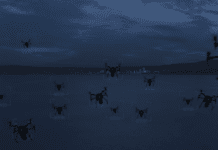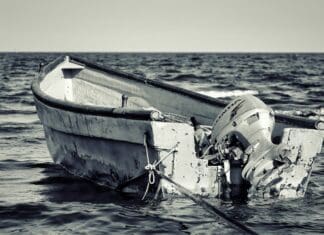
This post is also available in:
 עברית (Hebrew)
עברית (Hebrew)
Small boats used by terrorists or pirates and even armies can pose a major threat, and being able to confront them is vital for all defense platforms. The British Royal Navy has awarded a contract to QinetiQ for the introduction of a training variant of the company’s Pointer system to help optimize anti-surface warfare (ASW) training.
The five-year contract is intended to help boost the effectiveness of ASW training on a wide range of weapon systems.
The Pointer data analytics and measurement system was developed in collaboration with the UK Ministry of Defence’s (MoD) Defence Science and Technology Laboratory (DSTL) under a research project aimed at tackling threats presented by small boats.
The system is designed to counter threats from fast in-shore attack craft (FIAC) by providing the link between the command and control function and weapon operators.
The Royal Navy will use the Pointer T system in flag officer sea training (FOST) exercises to improve situational awareness and performance evaluation on a range of platforms.
“The introduction of Pointer T will provide invaluable feedback and data analytics for FOST trainers while also helping to engage and motivate gunnery teams,” said QinetiQ maritime programs director Stuart Hider.
The system is equipped with a weapon-mounted laser range finder and uses encoders to determine the exact position of weapon systems and location of GPS-tracked threats.
In addition, the system determines the nature and impact of ‘hits’. The Pointer system then transmits data that will be displayed in real-time on a portable situational awareness tool.
This will enable trainers to have a view of the performance data to improve training exercises, according to naval-technology.com.
The contract is the result of a progressive and close collaboration between three partners. The new program will capitalize on Saab’s AUV62-AT autonomous underwater vehicle system to provide full and effective simulation of an operational submarine in a wide range of training scenarios. QinetiQ, as the lead partner, will coordinate, manage and control all deployment of the simulated target, with Serco providing the vessels for launch and recovery, according to QinetiQ website.
“Pointer T will provide us with a highly responsive and cost-effective system to optimise our training capabilities and performance in FP training against small boats and SWARM (coordinated multi FIAC) serials,” said Navy surface warfare trainer lieutenant commander Richard Dobson.
























